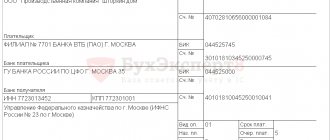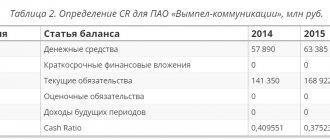What is the tax burden
This term refers to the share of revenue paid by the enterprise to the budget. Often, based on the value of this coefficient, the tax office understands whether the business is being conducted fairly. The Federal Tax Service calculates average load values for each type of activity and publishes tables with coefficients.
Banks also use the value of the tax burden when they decide to issue a loan or service a company. If the amount of payments to the budget from the total turnover of the account is less than that established by law, then the business is considered dishonest.
Safe tax burden values in 2020
These values change every year and are published by the Federal Tax Service in accordance with statistical reporting data. Below is a table with the coefficients that tax authorities use in 2020.
| Type of economic activity (according to OKVED-2) | 2019 | |
| The tax burden, % | For reference: fiscal burden for the North, % | |
| TOTAL | 11,2 | 3,5 |
| Agriculture, forestry, hunting, fishing, fish farming - total | 4,5 | 5,2 |
| crop and livestock farming, hunting and provision of related services in these areas | 3,4 | 4,8 |
| forestry and logging | 8,7 | 7,6 |
| fishing, fish farming | 10,1 | 6,0 |
| Mining - total | 41,4 | 1,7 |
| extraction of fuel and energy minerals - total | 50,9 | 1,1 |
| extraction of mineral resources, except fuel and energy | 11,4 | 3,6 |
| Manufacturing industries – total | 7,6 | 2,1 |
| production of food, beverages, tobacco products | 20,9 | 2,1 |
| production of textiles, clothing | 8,0 | 4,3 |
| production of leather and leather products | 10,0 | 5,3 |
| wood processing and production of wood and cork products, except furniture, production of straw products and wicker materials | 1,6 | 3,6 |
| production of paper and paper products | 4,8 | 1,9 |
| printing and copying activities | 8,9 | 3,8 |
| production of coke and petroleum products | 4,2 | 0,2 |
| production of chemicals and chemical products | 3,0 | 2,3 |
| production of medicines and materials used for medical purposes | 6,9 | 3,1 |
| production of rubber and plastic products | 6,9 | 2,8 |
| production of other non-metallic mineral products | 9,3 | 3,4 |
| metallurgical production and production of finished metal products, except machinery and equipment | 4,0 | 2,1 |
| production of machinery and equipment, not included in other groups | 9,9 | 4,4 |
| production of computers, electronic and optical products | 11,7 | 5,1 |
| production of electrical equipment | 7,5 | 3,3 |
| production of other vehicles and equipment | 6,5 | 4,7 |
| production of motor vehicles, trailers and semi-trailers | 5,8 | 1,5 |
| Providing electricity, gas and steam; air conditioning - total | 7,1 | 2,4 |
| generation, transmission and distribution of electricity | 8,3 | 2,1 |
| production and distribution of gaseous fuels | 1,3 | 1,7 |
| production, transmission and distribution of steam and hot water; air conditioning | 7,1 | 10,0 |
If an enterprise is engaged in several types of activities, then you need to focus on the tax burden for the one indicated as the main one. In the event that a company has moved to work in another industry, it is necessary to promptly enter data about this into the Unified State Register of Legal Entities. If the activity of an enterprise does not fall under any of the types indicated in the list above, then you need to look for values for the closest one in your industry.
Fiscal implications
The State Duma adopted in the first reading a package of bills that adjusts the system of collecting additional income tax (ATT) introduced in Russia last year, which is used mainly in the oil industry. What experts and oil workers themselves think about this is in the Lenta.ru material.
One of the main topics of the oil and gas forum in Tyumen, which completed its work on September 24, was changes in tax legislation for the oil industry, in particular, adjusting the parameters of the added income tax (AIT) and the abolition of a number of benefits for the mineral extraction tax (MET). The negative impact of tax innovations on the Russian oil industry and regional development was discussed by participants in the plenary session “The Future Today: New Opportunities for the Industry” at the Tyumen Oil and Gas Forum.
Amendments to the Tax Code and Customs Tariff were submitted to the State Duma by the government at the end of last week, and on September 22 they were already adopted in the first reading. Amendments to the Customs Tariff from January 1, 2021 remove the opportunity for companies to set a reduced export duty on oil from new fields with special physical and technical characteristics. This benefit has been applied since 2013 and applies to 15 fields. Mineral extraction tax benefits for the production of ultra-viscous oil and benefits for companies that, at their own expense, carry out search and exploration of the fields they develop are also removed. In return, companies that enjoyed the above benefits are invited to switch to the AIT regime. But the bill revises the parameters of the tax itself, which is not in favor of individual mining enterprises.
According to Deputy Energy Minister Pavel Sorokin, it is necessary to make every effort to monetize the fossil fuels available in Russia, and not increase the tax burden, this is especially true in the context of the trend towards finding renewable energy sources. “If we impose additional taxes on our industry, which is not yet the leading industry in the world, then this could turn out to be a very large burden. Not only do we have very high financing rates for all projects, our tax system taxes the hydrocarbon production sector quite heavily,” said Pavel Sorokin. “If there is time left for hydrocarbons when they will still have a rent of 30-40 years, we must understand: so that these resources do not remain in the ground now, we need to make every effort to extract them and use them for the benefit of the economy.”
Deputy Minister of Energy of the Russian Federation Pavel Sorokin
Photo: Donat Sorokin / TASS
Chairman of the Skolkovo Foundation Arkady Dvorkovich, who at one time oversaw the fuel and energy complex as Deputy Prime Minister, agreed with him. According to him, recent amendments by the Ministry of Finance to the Tax Code have deprived the industry of a third of new projects. “In just a couple of days, 30-40 percent of new projects were cut off, taking them beyond the overall profitability. And here it is very important to count on the next 15 years, and not just one year. What the Ministry of Finance did was a calculation for one year, for 2021, where suddenly an additional 100 billion rubles were needed,” Arkady Dvorkovich is categorical.
Tax policy in the fuel and energy sector must be long-term and stable in order to maintain investor interest and support regional development. “It is impossible not to admit that the stability of tax legislation is a guarantee for guaranteed investments, and primarily in oil production and petrochemicals, and the fact that the government was forced to change the already adopted rules of the game - certain companies mainly suffered,” said the vice - Prime Minister Yuri Borisov. “The effect on different companies is different, and the losers to a greater extent are producers who used the exemption for the production of heavy, high-viscosity oil, since it ceases to exist,” says Maxim Nechaev, director of consulting in Russia at IHS Markit. “If the production of such oil is suspended, then it will be very difficult to increase it again in the future.”
According to Yuri Borisov, in a crisis it is necessary to look for measures to maintain investment attractiveness and spend more in order to quickly get out of the crisis situation. “For me, as an industrialist, this is obvious, because if we reduce budget expenditures this year, then the collection in subsequent years will not increase,” Borisov continued. He expressed the hope that the proposed tax changes are “short-term firefighting measures.” “If we restore our economy, it will be possible to quickly return, from 2021-2022, back to more interesting mechanisms that will provide preferences to our leading companies so that they more dynamically develop market segments,” the Deputy Prime Minister concluded.
The situation is really complicated. “On the one hand, the withdrawal of about 300 billion rubles per year from the industry in the context of OPEC+ and low prices has very negative consequences for the industry in terms of the ability to finance new projects. On the other hand, the budget now urgently needs resources to fulfill increased social obligations due to the pandemic,” comments Daria Kozlova, director of consulting in the field of state regulation of the fuel and energy complex at VYGON Consulting. — To maintain the status quo, it would be right to introduce additional incentives for new investments in the industry starting in 2023 after the completion of OPEC+ and when the market stabilizes. Moreover, this must be done now, since the investment planning cycle in the oil industry is at least five years old, which means investors must be confident in the future now.”
Yuri Borisov
Photo: Ramil Sitdikov / RIA Novosti
The heads of the “oil-producing” regions also noted that changes in the tax regime for the industry could negatively affect the socio-economic development of the regions. “On the regional side, we do everything. But I think now is the most responsible time, primarily on the part of the federal government, to pursue a stable long-term tax policy, perhaps in exchange for investment. Because investing in energy can only be done with the understanding that the rules of the game will be long-term,” noted Governor of the Tyumen Region Alexander Moor.
In turn, the governor of the Yamalo-Nenets Autonomous Okrug, Dmitry Artyukhov, called the news on the change in the income tax “a strong blow to the industry” and pointed out that such tax changes would negatively affect the oil and gas industry and, as a result, the development of the region. He fears that oil companies will soon begin to curtail plans and cut teams.
Business representatives also noted that maintaining profitability and developing new projects is only possible under conditions of stable tax legislation. “It takes 18-20 months from the moment the investment decision is made to the moment of implementation. And decisions of the legislative framework, legislative framework, preferential regulation, among other things, often change within one calendar year, or even several times,” said First Vice President of Lukoil Azat Shamsuarov.
Chairman of the Board of Gazprom Neft Alexander Dyukov
Photo: gazprom-neft.ru
The Ministry of Finance’s proposals to change taxation in the oil industry will lead to a decrease in investment in the oil industry, which will deprive the petrochemical industry of raw materials, the development of which the government wants to stimulate with a reverse excise tax, says Alexander Dyukov, Chairman of the Board of Gazprom Neft. “Indeed, this creates such an interesting, even paradoxical situation. On the one hand, the decision that has almost been made to stimulate the processing of ethane and LPG is precisely aimed at additional investments, stimulates the construction of gas chemical production, but at the same time, the innovations that the Ministry of Finance is preparing will lead to a reduction in investment from the oil industry,” he explained. “This will certainly affect not only regional budgets and our related companies [oil service companies, manufacturers of materials and equipment for the oil and gas industry], but also, of course, it will affect production volumes over time,” said Alexander Dyukov.
Chairman of the Board of SIBUR Holding Dmitry Konov agreed that significant regulatory or economic changes pose a threat to the development of the industry. “Looking forward, both the carbon footprint and fiscal regulation of oil and gas will lead to a reduction in the opportunities that petrochemicals create,” explained Dmitry Konov. In his opinion, to avoid this, it is necessary to create an incentive for oil and gas companies to expand production.
Fast news delivery - in the “Feed of the day” in Telegram
subscribe
How to calculate the tax burden
First of all, you need to understand what exactly to take for calculation. According to the latest instructions from tax authorities:
- revenue is taken without excise duties and VAT;
- insurance premiums are excluded from the calculation;
- income is taken from line 2110 of the annual income statement;
- The amount of taxes includes the personal income tax paid.
The tax burden coefficient is calculated using the formula:
Tax burden = Amount of taxes paid / Income * 100.
Calculation example
From the tax return of the machine-building enterprise it follows that the company paid taxes in the amount of 850,000 rubles last year. At the same time, insurance premiums amounted to 330,000 rubles. The company's revenue is 9.5 million rubles. (without VAT). Let's calculate the existing tax burden:
850 000 / 9 500 000 * 100 = 8,94.
The burden of insurance premiums is equal to:
330 000 / 9 500 000 * 100 = 3,47.
Now we need to compare the obtained values with the industry averages for 2020. For mechanical engineering, the total burden is 9.9, and for insurance premiums – 4.4. We can summarize that this company pays less taxes than the average company in this industry. Therefore, the business is under the close attention of the fiscal authorities - the enterprise may be included in the plan of on-site tax audits or an explanation from the Federal Tax Service will be required.
How to write an explanatory note to the tax office
Not a day without instructions × Not a day without instructions
- Services:
An explanatory note to the Federal Tax Service is a document in which the taxpayer explains the current circumstances. Representatives of the Federal Tax Service quite often request clarification, especially in cases where the enterprise’s reporting shows a significant decrease in fiscal payments. We tell you how to correctly compose an explanatory note.
September 27, 2020 Author: Natalya Evdokimova When conducting an inspection, the inspector has the right to request written explanations. Situations in which it is mandatory to provide an explanatory note to the tax office upon request (we offer a sample for NPOs) are specified in paragraph.
3 tbsp. 88 Tax Code of the Russian Federation:
- The submitted income tax return reflects losses. In any case, you will have to justify unprofitable activities to the Federal Tax Service, so you can prepare an explanatory note on losses in advance.
- In the adjusting statements, the amounts payable to the budget are significantly lower than in the initial calculations. In such a situation, the inspector may suspect a deliberate understatement of the tax base and payments and will demand an explanation for the changes.
- Errors in submitted reports. For example, inaccuracies or inconsistencies are identified in the declaration. In this case, tax authorities require you to provide justification for these discrepancies or send a corrective report.
The inspection request must be responded to within 5 working days from the date of official delivery of the request - such norms are enshrined in paragraph.
3 tbsp. 88, paragraph 6 of Art. 6.1 Tax Code of the Russian Federation. In special cases, the Federal Tax Service will have to notify the receipt of a tax request (Letter of the Federal Tax Service of the Russian Federation dated January 27, 2015 No. ED-4-15/1071).
Some requests may not have an official seal. You will still have to respond to such requirements - such explanations are given in Letter of the Federal Tax Service of the Russian Federation dated July 15, 2015 No. When drawing up an explanatory note, we are guided by the following rules:
- We compose a response on the organization’s letterhead. If there is no such form, in the header of the document we indicate the full name of the institution, INN, KPP, OGRN and address.
- When answering a request, rely on the facts and document the circumstances. Attach copies of documents to the answer, if any. For example, attach to the explanatory note a copy of the additional agreement to the contract with the provision for increasing prices.
- In the descriptive part of the explanatory note, we reveal in detail and consistently the circumstances of the situation that needs to be explained.
- If there are errors or inconsistencies in the report, double-check the report to eliminate typos or typos.
- We indicate the number and date of the requirement for which the explanatory note is being drawn up. It is permissible to write a response to several tax requests at once.
If the inspector requires an explanatory note regarding inconsistencies in the value added tax return, the response will have to be sent electronically.
An exception to the rules is reserved for organizations that report VAT on paper.
Calculation formulas for different types of taxation
The tax office calculates the burden for each enterprise separately, depending on the type of taxation and type of taxes. Let us consider in more detail the calculation methods for each particular case.
For organizations on OSNO
Tax burden = (Amount of VAT payable to the budget + Amount of income tax calculated for payment) / Revenue * 100,
Where:
- the VAT amount is taken from page 40, section. 1 VAT declaration;
- tax amount - from page 180, sheet 2 of the income statement;
- revenue - from line 2110 of the financial statements.
For individual entrepreneurs on OSNO
Tax burden = personal income tax / Total taxable income * 100,
Where:
- Personal income tax is taken from page 40, section. 1 declaration 3-NDFL;
- amount of income - from page 60, section. 2 declarations 3-NDFL.
For individual entrepreneurs and organizations on the simplified tax system
Tax burden = Amount of tax transferred / Amount of income received * 100,
Where:
- the tax amount is taken from page 133, section. 2.1.1, 2.1.2 and pp. 273, 280, sec. 2.2 declarations according to the simplified tax system;
- amount of income - from page 113, section. 2.1.1, 2.1.2 and page 213, sec. 2.2 declarations according to the simplified tax system.
For individual entrepreneurs and organizations on the Unified Agricultural Tax
Tax burden = Amount of calculated tax / Amount of income received * 100,
Where:
- the tax amount is taken from page 50, section. 2 declarations on Unified Agricultural Tax;
- the amount of income is taken from page 10, section. 2 declarations under the Unified Agricultural Tax.
If an enterprise has obligations to pay transport, water and land taxes, excise taxes, mineral extraction tax, and use of resources, then these are also included in the calculation.
Income tax burden
The current documents do not contain a methodology for calculating the burden separately for income tax. It was stated in the letter of the Federal Tax Service dated July 17, 2013 No. AS-4-2/12722, which has now been cancelled. But it is possible that tax authorities can still use the same methodology when analyzing the burden of taxpayers.
The calculation formula looks like this:
In the mentioned letter, low is understood as the tax burden:
- less than 3% – for manufacturing enterprises;
- less than 1% – for trade enterprises.
VAT burden
For companies using this type of tax, the fiscal service also calculates the share of deductions using the following formula:
Share of deductions = Total amount of deductions / Total amount of accrued VAT * 100%,
Where:
- the amount of deductions is taken from line 190, section. 3 VAT returns;
- VAT amount – from line 118, section. 3 VAT returns.
If the result of the calculations is more than 89%, then the enterprise will be classified as a risk group, so before each submission of a declaration it is worth checking the proportion of VAT deductions. In case of excess, it is better to transfer part of the deductions to the future or leave them as they are and prepare answers to questions from tax authorities and supporting documents.
Personal income tax burden
The calculation of the tax burden for personal income tax is determined by the formula:
Tax burden for personal income tax = Calculated personal income tax / Total amount of income from this activity * 100%.
The tax office will require an explanation if the resulting value is too low. For legal entities, an important indicator here will be the dynamics of payments; the Federal Tax Service will pay close attention to the company if:
- Personal income tax amounts decreased relative to previous periods by more than 10% based on the results of the quarter or year.
- Based on the amount of personal income tax, it was revealed that the company pays wages below the regional average.
- The amounts of insurance premiums are also reviewed to see if they have decreased with the same number of employees.
Absolute and relative tax burden
The concept of tax burden is used to establish the financial obligations of an entrepreneur to the state. It can be viewed as a relative or absolute value.
The amount burdening the entrepreneur due to his duties as a taxpayer, expressed in a certain figure, constitutes the absolute value of the tax burden.
Entrepreneurs need to know this figure in order to plan the ratio of expenses and income, optimize the business, and evaluate its profitability.
Tax authorities interpret the tax burden as a measure characterizing the funds that an entrepreneur allocates from business for his tax expenses. This approach is relative, as it includes many parameters taken into account by the Federal Tax Service.
That is why the relative designation of the tax burden better allows us to analyze the impact of the tax burden on the financial condition of the entrepreneur and the profitability of his business.
Sometimes the tax burden is identified with the effective tax rate - a percentage of the actual payment of a particular tax in the total tax base. When it comes to the tax burden for a specific tax, it is permissible to apply this definition, which is what is done in some regulations.
How to control your tax burden
When preparing scheduled audits, tax officials primarily include the following companies:
- working with negative profitability indicators;
- with a large share of deductions for personal income tax or VAT;
- with a reduced level of burden on basic contributions corresponding to the chosen taxation system;
- with tax debts;
- with reduced amounts of contributions to the budget compared to previous years;
- applying unjustified benefits for paying taxes.
All these factors lead to the fact that the fiscal service begins to doubt the “conscientiousness” of the enterprise and an official request is sent to the manager demanding an explanation for the discrepancies. If the answer is unclear or does not correspond to the real state of affairs, then verification cannot be avoided.
On the other hand, the analysis must also be carried out within the enterprise in order to timely detect problems with tax policy and identify its irrationality. In this case, it will be possible to carry out a number of measures that adjust the tax base while planning the tax burden. This can be done personally by the manager or chief accountant under the control of the business owner.
It will be necessary to carefully ensure that the tax burden is not less than 1% of the industry average. The coefficient may be higher than that specified by the Federal Tax Service, but this will mean that the company is overpaying taxes. To plan the burden of contributions to the budget, you need to:
- check the current required level of tax burden;
- plan the load for each type of tax and for the enterprise as a whole;
- determine the methods by which the intended result can be achieved;
- monitor the completion of the task and periodically make calculations independently.
- A timely change in tax policy will allow you to avoid an on-site audit by tax authorities.
Why do you need to know the tax burden “in person”?
Let's start by answering the main question: why, that is, for the industry and the market as a whole, is there a tax burden?
The first-order answer is obvious - to better understand the industry environment and your place in it. However, there is also a second-order reason - it is the average industry tax burden that the fiscal authorities look at when assessing a company as a respectable or dishonest payer. Deviation from the benchmark can cause unpleasant consequences for the company.
The tax burden is one of the key markers for the Federal Tax Service when deciding to conduct an on-site tax audit. In the list of 12 reasons for an on-site tax audit, low tax burden is among the first.
During the coronavirus pandemic, a moratorium has been imposed on on-site tax audits. According to Decree of the Government of the Russian Federation dated May 30, 2020 No. 792, the moratorium is valid until June 30. The further situation is difficult to predict; perhaps the moratorium will be extended, but there is a good chance that it will end soon. This means that the company’s tax burden will be examined by the Federal Tax Service “under a microscope.” If it does not correspond to the industry average, the likelihood of personal and lengthy communication with the tax inspector increases sharply.
How to explain the low tax burden
Almost every newly opened enterprise will have a level below that required by law. Typically, fiscal services take into account the date of creation of the company during each document check, but it may be necessary to provide additional clarification to the Federal Tax Service.
It will be more difficult for those companies that have been operating for more than one year, and the tax burden has recently decreased. In this case, most often the reason is indicated by activities under several OKVED - tax authorities often use only the main type of economic activity for calculations, so the data may be overestimated. In this case you can:
- change the main OKVED code and inform the fiscal service that you have worked according to it before - this is not prohibited by law;
- independently calculate the tax burden separately for each type of company activity.
Recalculation of the load can also be useful in terms of checking whether personal income tax was included in the calculation of the tax burden. The Federal Tax Service often forgets about this tax, and the result is an overestimated figure.
If all values are calculated correctly, then the company can explain its underestimated tax burden ratio as follows:
- Not only production activities are carried out, but there are also investment investments;
- a lot of effort is aimed at developing the production (or trade) network;
- the development of a new type of activity has begun (suitable for companies that have been operating for several years).
You can also point out to tax officials data from statistics for a specific region and industry that during this period there were objective reasons for the deterioration of affairs. This could be a decline in the area of business activity or in a related area where the main buyers are located, etc. For example, the following objective circumstances for reducing the tax burden are often indicated:
- decrease in product sales volumes;
- a strong increase in the cost of raw materials from suppliers;
- increase in administrative expenses, employee salaries, and other costs.
All data must be supported by reports from previous periods, where everything was in order and the tax burden was higher. Then it will be clear that the company is really facing problems at this time, which resulted in a decrease in transfers to the budget.
When loss cannot be avoided
For example, a company has just been registered, but has already managed to carry out the procedure for concluding contracts and has even begun to implement them. But revenue from products or other activities was received only some time after the end of the reporting period. That is, according to the documents, the company did not make a profit during the reporting period, which means it was at a loss.
To prevent tax authorities from suspecting a company of dishonest treatment of obligations, care should be taken to ensure that there is evidence of the organization’s honesty. Reasons that can lead a company to a loss are divided into 6 types:
Evidence is needed everywhere, especially if the company revealed losses at the end of the year. But if they appeared in the interim period, then the main thing in this matter is to convince the tax authorities that such a problem is temporary and will completely disappear by the end of the year.









